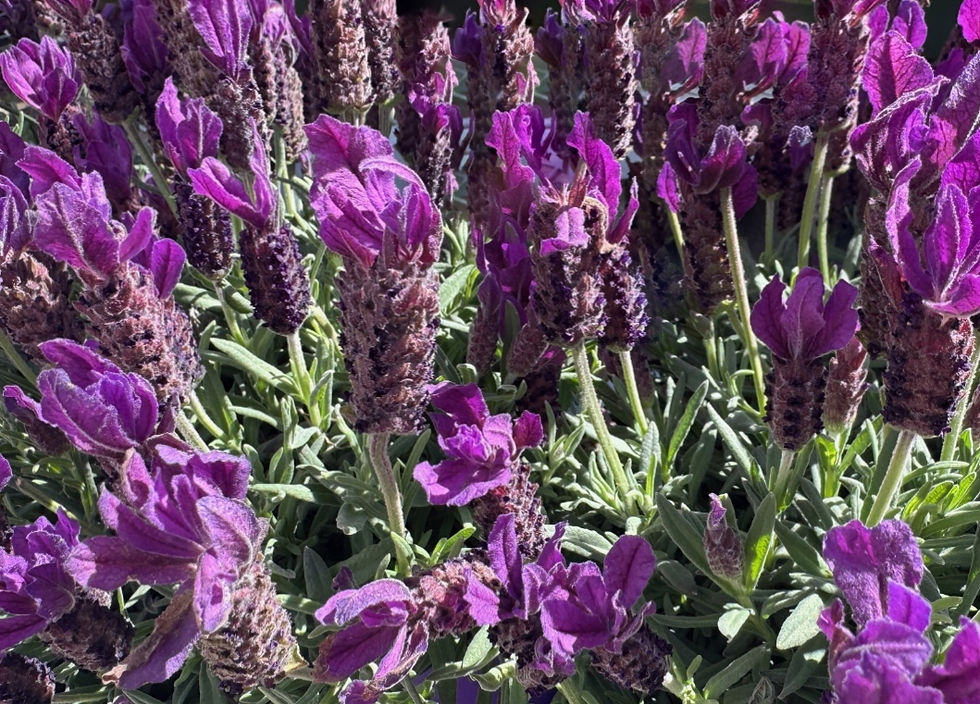Bay Essential Oil
- unico2kc
- Mar 24
- 2 min read
Updated: Jun 16
The following is an excerpt from my upcoming book Aroma-Reiki: Healing The Body, Mind, and Chakras with Reiki-charged Essential Oils.

Bay Laurel
Botanical name: Laurus nobilis
Family: Lauraceae
Parts used: Leaves
Extraction Method: Steam distillation
Planet: Sun
Element: Fire
Primary Constituents: Compounds such as elemicin (1%–12%), methyl eugenol (9%–12%), and eugenol (11%–12%) are significant in bay leaf.
Therapeutic Actions: Analgesic, anticonvulsant, anti-inflammatory, antioxidant, antiseptic, bactericidal, carminative, sedative.
Effects on mind, emotions, and body: Calming, sharpens senses, improves memory and mental clarity, warming, improves digestion, and suppresses appetite.
Healing intention: Reduce stress, pain relief, digestion problems, dieting, sore and tight muscles. Helps to fight tonsillitis, colds, flu, and viral infections.
Chakra: Third Eye Chakra (stimulates psychic awareness and intuition).
Safety data: A skin-patch test is necessary because of the potential for skin irritation as the toxic rating is II. Phellandrene, 1,8 cineole, and methyl eugenol are the toxic components. Bay shouldn't be taken when nursing a baby or when pregnant. Use caution when using essential oils that contain more than 10% of 1,8 cineole, eucalyptpol, or cajuputol. 1,8 cineole especially sensitizes children. Avoid applying to the nose, eyes, or face with full strength. For children younger than ten, don't let diffusion last longer than fifteen minutes in a well-ventilated environment. Applying anything on a baby's face or a child younger than ten-years old should never be done, not even diluted. Do not use undiluted. Do not take internally unless under the care of a professional aromatherapist.
In a Reiki healing session for a client who is having problems relaxing during meditation, I might mix a diffuser blend of 3 drops of bay, 3 drops of lavender and 4 drops of sweet orange. Lavender is both calming and stimulating. It works with the third eye chakra in clearing the mind. Sweet orange is uplifting and calming. It can stimulate self-confidence in the solar plexus chakra. Sometimes when we are having difficulty meditating, a little boost in the self-confidence area can be helpful.
Bay oil has a light, olive-colored to light yellow color and has a robust, spicy, sweet, and slightly medicinal aroma that also blends with bergamot, black pepper, clary sage, cypress, frankincense, juniper, lavender, neroli, nutmeg, petitgrain, pine, rosemary, sweet orange, and vetiver.
References
Heath, M. (1996). Ceridwen’s handbook of incense, oils, and candles: Being a Guide to the Magickal and Spiritual Uses of Oils, Incense, Candles, and the Like.
Lattin, A. (n.d.). Introduction to Essential Oil Chemistry. In American College of Healthcare Sciences.
Lawless, J. (1995). The illustrated encyclopedia of essential oils : the complete guide to the use of oils in aromatherapy and herbalism. http://ci.nii.ac.jp/ncid/BA57263003
Loughran, J., & Bull, R. (2000). Aromatherapy and subtle energy techniques: Compassionate Healing with Essential Oils. Frog Books.
Petersen, D. (2020). Aromatherapy Materia Medica Essential Oil Monographs. American College of Healthcare Sciences.
Petersen, D. & ACHS Aromatherapy Department. (2020). Therapeutic Action Guide (20th Edition). American College of Healthcare Sciences.
Schiller, D., & Schiller, C. (1996). Aromatherapy for mind & body. Sterling Publishing Company Incorporated.
Picture Credit
anandasandra. (2017). Laurrel Laurus Nobilis [Photo]. Pixabay.
© 2025 KC's Innovations










Comments